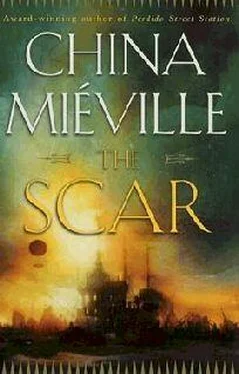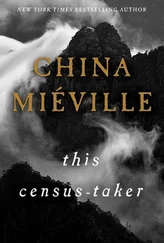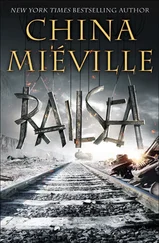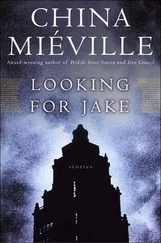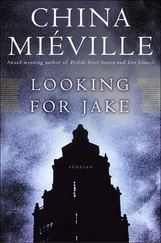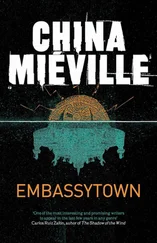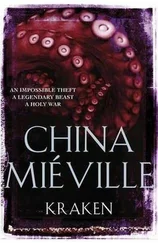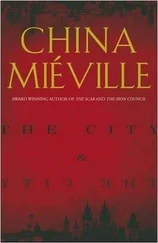At the time, all she had been aware of was the couple’s shared intensity, and the stunned excitement that greeted the woman’s final sentence.
The words had reached Bellis full seconds after they were spoken, as if her skull were some thick medium through which sound traveled sluggishly.
There was a massed gasp and a whoop and then a swell of incredulous cheering, a huge breaking wave of joy from the hundreds of exhausted Remade prisoners who stood shivering and stinking. It rose and rose, at first tentative and then rapidly delirious with triumph.
“Human, cactacae, hotchi, cray… Remade ,” the woman had said. “In Armada you are all sailors and citizens. In Armada you are not distinguished. Here you are free. And equal.”
There, finally, was a welcome. And the Remade accepted it with loud and tearful thanks.
Bellis had been herded away with her random companions, out into the city where the men and women of the city’s trades were waiting with contracts and hard, eager looks. And as she shuffled out of the room, she looked back at the group of leaders and saw with astonishment that someone had joined them.
Johannes Tearfly was looking down, totally bewildered, at the hand that the scarred man proffered-not snubbing it, but as if he could not think what he was supposed to do with it. The elderly man who had stood with the murderer and the scarred couple stepped forward, stroking his bright white beard, and greeted Johannes loudly by name.
That was all Bellis had seen or heard before she was taken away. Off the ship, out into Armada, into her new city.
A flotilla of dwellings. A city built on old boat bones.
Everywhere battered clothes shook and dried in the constant wind. They ruffled in Armada’s alleyways, by tall brickwork, steeples, masts, and chimneys and ancient rigging. Bellis looked from her window across the vista of reconfigured masts and bowsprits, a cityscape of beakheads and forecastles. Across many hundreds of ships lashed together, spread over almost a square mile of sea, and the city built on them.
Countless naval architectures: Stripped longships; scorpion galleys; luggers and brigantines; massive steamers hundreds of feet long down to canoes no larger than a man. There were alien vessels: ur-ketches, a barge carved from the ossified body of a whale. Tangled in ropes and moving wooden walkways, hundreds of vessels facing all directions rode the swells.
The city was loud. Tethered dogs, the shouts of costermongers, the drone of engines, hammers and lathes, and stones being broken. Klaxons from workshops. Laughter and shouting, all in the variant of Salt, the mongrel sailors’ tongue, that was the language of Armada. And below those city sounds the throaty noise of boats. Complaining wood and the snaps of leather and rope, the percussion of ship on ship.
Armada moved constantly, its bridges swinging side to side, its towers heeling. The city shifted on the water.
The vessels had been reclaimed, from the inside out. What had once been berths and bulkheads had become houses; there were workshops in old gundecks. But the city had not been bounded by the ships’ existing skins. It reshaped them. They were built up, topped with structure; styles and materials shoved together from a hundred histories and esthetics into a compound architecture.
Centuries-old pagodas tottered on the decks of ancient oarships, and cement monoliths rose like extra smokestacks on paddlers stolen from southern seas. The streets between the buildings were tight. They passed over the converted vessels on bridges, between mazes and plazas and what might have been mansions. Parklands crawled across clippers, above armories in deeply hidden decks. Decktop houses were cracked and strained from the boats’ constant motion.
Bellis could see the awnings of Winterstraw Market: hundreds of jolly boats and flat-bottomed canal runners, none more than twenty feet long, filling the spaces between grander vessels. The little boats bumped each other constantly, tethered together with chains and crusted knotwork. The stallholders were opening up, garlanding their little shop boats with ribbons and signs and hanging up their wares. Early shoppers descended to the market from surrounding ships by steep rope bridges, stepping expertly from boat to boat.
Beside the market was a corbita smeared with ivy and climbing flowers. Low dwellings were built onto it and beautifully carved. Its masts had not been felled, but were wound with greenery that made them look like ancient trees. There was a submersible that had not dived for decades. A ridge of thin houses extended around its periscope like a dorsal fin. The two vessels were joined by rippling wooden bridges that passed above the market.
A steamship was become a residential block, its hull broken with new windows, a children’s climbing frame on its deck. A boxy paddleboat housed mushroom farms. A chariot ship, its bridle polished decoratively, was covered with brick terraces that filled the curves of its naval foundations. Chains of smoke rose from its chimneys.
Buildings laced with bone, colors from greys and rusts to the flamboyant glares of heraldry: a city of esoteric shapes. Its hybridity was stark and uncharming, marred with decay and graffiti. The architecture hunkered and rose and hunkered again with the water, vaguely threatening.
There were slums and mansions in the bodies of tramp merchant ships, and built tottering across sloops. There were churches and sanatoria and deserted houses, all licked by constant damp, contoured with salt-steeped in the sounds of waves and the fresh-rot smell of the sea.
The ships were tethered together in a weave of chains and hinged girders. Every vessel was a pontoon in a web of rope bridges. Boats coiled toward each other in seawalls of embedded ships, surrounding free-floating vessels. Basilio Harbor, where Armada’s navy and visitors could tie up, repair or unload, sheltered from storms.
The largest ships meandered instead around the edges of the city, beyond the tugs and steamers tethered to Armada’s sides. Out in the open water were fleets of fishing boats, the city’s warships, the chariot ships and whim trawlers and others. These were Armada’s pirate navy, heading out across the world, coming in to dock with cargoes plundered from enemies or the sea.
And beyond all that, beyond the city sky that thronged with birds and other shapes, beyond all the vessels was the sea.
The open sea. Waves like insects in incessant motion.
Stunning and empty.
Bellis was protected by those who had caught her, she was made to understand. She was a resident of Garwater riding, ruled by the man and woman with the scars. They had promised work and a berth for all those they had taken, and it had happened quickly. Agents had met the terrified, confused new arrivals, calling out the names on their lists, checking the skills and details of the newcomers, brusquely explaining in pidgin Salt what work they offered.
It had taken Bellis some minutes to understand, and more to believe, that she was being offered work in a library.
She had signed the proffered papers. The officers and sailors from the Terpsichoria were being led forcibly away for “assessment” and “reeducation,” and Bellis had felt in no mood to be difficult. She had scratched her name, tight with resentment. Call this a damned contract? she felt like shouting. There’s no choice here, and everybody knows it. But she had signed.
The organization, the mumming of legality, confused her.
These were pirates. This was a pirate city, ruled by cruel mercantilism, existing in the pores of the world, snatching new citizens from their ships, a floating freetown for buying and selling stolen goods, where might made right. The evidence of this was everywhere: in the severity of the citizens, the weapons they wore openly, in the stocks and whipping posts she saw on the Garhouse vessels. Armada, she thought, must be ordered by maritime discipline, the lash.
Читать дальше
